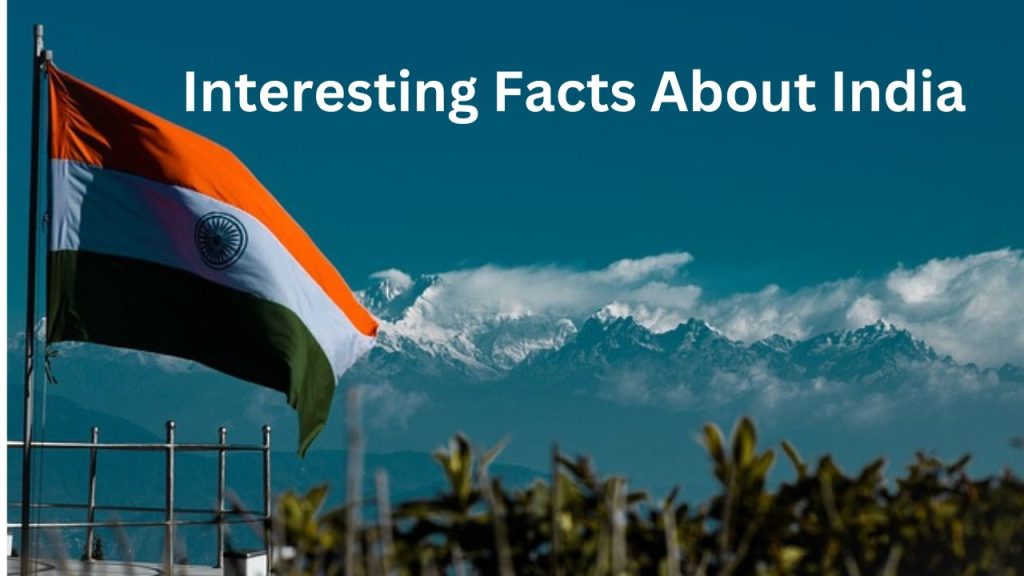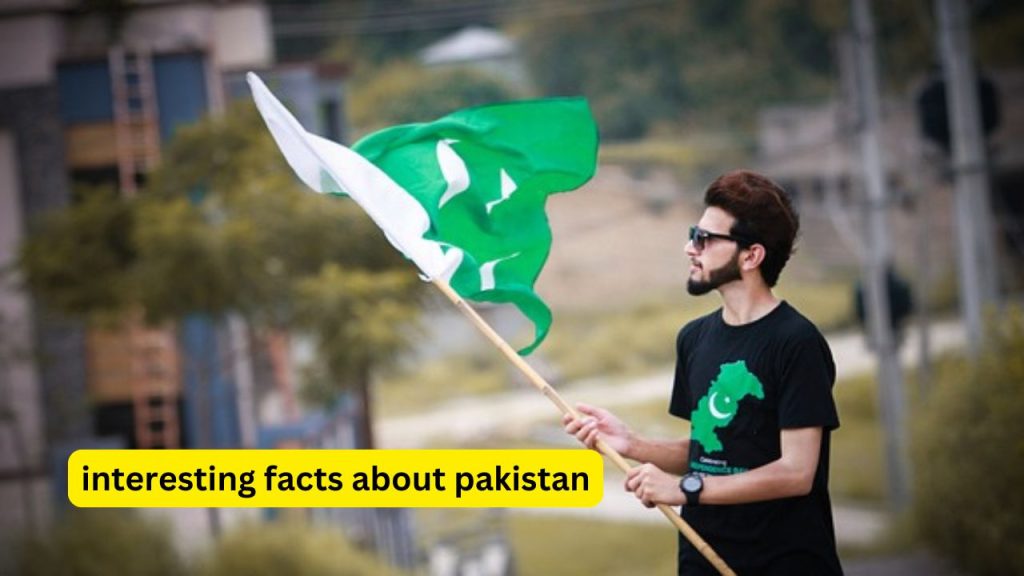Discover 30 interesting facts about India, from its rich cultural heritage and diverse traditions to its technological advancements and natural wonders. Explore the unique aspects of this fascinating country!
Interesting Facts About India
India is a country of incredible diversity, where ancient traditions blend seamlessly with modernity. From the majestic Himalayas to the sun-kissed beaches of Goa, India offers a treasure trove of cultural richness, historical depth, and natural beauty. Whether you’re fascinated by its festivals, food, or folklore, there’s always something new and captivating to learn about India. Let’s dive into some fascinating and lesser-known facts about this remarkable country.
1. India: The Multilingual Nation

There are an astounding amount of languages spoken in India. The nation really has **19,500 dialects** and 22 officially recognized languages! Although English is used as a secondary official language, particularly in legal and administrative contexts, Hindi is the language that is most often used. There are millions of speakers of languages other than Hindi and English, including Bengali, Telugu, Marathi, Tamil, and Urdu. Every language contributes to the rich cultural legacy of India and its patchwork of identity.
2. The World’s Largest Democracy
India is home to more than **1.4 billion** people, making it the largest democracy in the world. Millions of Indians vote in one of the world’s most intricate election systems every five years. The technical challenge of guaranteeing that every person, from the far-flung villages of Ladakh to the busy city of Mumbai, can take part in the democratic process is what makes it so exciting.
3. A Heaven for Foodies
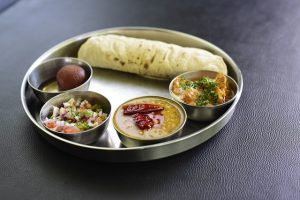
Indian food is as varied as its people. Every area has its own distinct flavors and cooking methods, from the creamy butter-based cuisine of the North to the hot curries of South India. As an aside, did you realize that **the world’s largest user of spices** is India? Coriander, cumin, turmeric, and a myriad of other spices are central to Indian cooking, making every dish an aromatic journey. The country’s love affair with street food is legendary too – from chaat in Delhi to vada pav in Mumbai, the street food scene is a delight for any foodie.
4. Home to Four Major Religions

India is the birthplace of four of the world’s major religions: Hinduism, Buddhism, Jainism, and Sikhism. Hinduism is the dominant religion, followed by nearly **80%** of the population, while India is home to the largest population of Sikhs globally. The teachings of Buddha, who attained enlightenment in India, continue to influence millions of people worldwide. Religious diversity and tolerance are intrinsic to the nation’s fabric, where mosques, temples, churches, and gurudwaras often stand side by side.
5. The Taj Mahal: A Symbol of Eternal Love
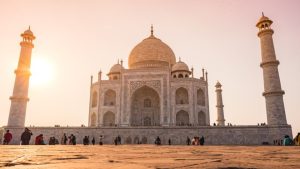
One of the **Seven Wonders of the World**, the **Taj Mahal**, located in Agra, stands as a timeless symbol of love. Commissioned by Mughal Emperor Shah Jahan in memory of his wife Mumtaz Mahal, this ivory-white marble mausoleum attracts millions of visitors annually. Its intricate carvings, grand architecture, and the romantic backstory behind it make the Taj Mahal one of the most beloved landmarks in the world.
6. Festivals Are Loved in India

India has unparalleled excitement and energy for celebrating festivals. India celebrates hundreds of festivals throughout the year, many of which are exclusive to specific areas or religions, in contrast to many other nations that only have a few big holidays. Celebrated countrywide as **Diwali**, the festival of lights, represents the triumph of light over darkness. Another well-known event is **Holi**, the festival of colors, where participants merrily hurl colorful powders at one another to represent love, joy, and the approach of spring. Every celebration, including **Eid**, **Christmas**, and **Durga Puja**, exemplifies the variety and harmony that characterize India.
7. Making the Chess Piece Connect
Did you know that the game of **chess** originated in India? During the Gupta Empire, **Chaturanga** was invented and is regarded as the forerunner of the current game of chess. Elephants, chariots, infantry, and cavalry were the four departments of the military represented by the distinct rules and pieces used in the ancient Indian version of the game, which was played on a board similar to modern ones.
8. Bollywood: The Greatest Film Industry in the World

The film industry of India, commonly referred to as **Bollywood**, produces more films per year than that of any other nation worldwide! Bollywood movies are well-known for their colorful song-and-dance scenes, dramatic storylines, and fantastical protagonists. With **1,500 films** made annually, Bollywood has enormous popularity both in India and beyond the world. Bollywood celebrities like Priyanka Chopra and Shah Rukh Khan have gained international recognition.
9. The Railways of India
India has one of the busiest and biggest railway networks in the world, handling millions of people every day. The Indian Railways, which cover **67,000 kilometers**, run more than **20,000 trains** every day. It’s incredible that the system acts as a lifeline in addition to a means of transit.
10. India’s Space Exploration
India might be known for its ancient wisdom, but it’s also a pioneer in modern science and technology. In 2014, India became the **first country to reach Mars on its maiden attempt** with the **Mars Orbiter Mission (Mangalyaan)**. The mission was remarkably cost-effective, showcasing India’s ingenuity in space exploration. In 2019, India also attempted a moon landing with the **Chandrayaan-2 mission**, further asserting its capabilities in the space sector.
11. Yoga: A World Gift from India

Over **5,000 years ago**, the ancient Indian civilization gave rise to the discipline of **yoga**, which is now a worldwide phenomenon. Yoga is a comprehensive practice that unites the mind, body, and spirit. It is not merely a physical workout. June 21st is International Yoga Day. It was suggested to the United Nations by India and is now commemorated worldwide to promote inner peace, health, and wellbeing.
12. The Longest Constitution in Writing
The Constitution of India, including **448 articles** split into **25 parts**, is the **longest in the world** and establishes the legal foundation for the nation. It took **2 years, 11 months, and 18 days** for Dr. B.R. Ambedkar to write the Constitution. Because of its extensive scope, it is able to balance the demands of a heterogeneous population while taking into account the complexity of a multilingual, multiethnic, and multireligious society.
13. The Historical Universities
Scholarly pursuits and intellectual inquiry have a long history in India. Founded in the **5th century**, **Nalanda University** drew students from as far away as China, Korea, and Southeast Asia, making it one of the earliest residential institutions in history. At its busiest, Nalanda accommodated more than **10,000 pupils and 2,000 faculty members**, providing instruction in a wide range of subjects, from philosophy to astronomy. Unfortunately, it was destroyed in the 12th century, but it remains a symbol of India’s rich academic heritage.
14. In India, the Banyan Tree
Indian culture places great importance on the **banyan tree**. Symbolizing longevity and wisdom, it is the national tree of India. A unusual growth pattern that produces new trunks from aerial roots sent out by branches is the banyan tree’s most notable feature. A mini-forest is formed beneath the canopies of some banyan trees, such as the well-known one in **Kolkata**. These trees cover acres of ground.
15. Adventure Land
Some incredible innovations have come from India. The game of **snakes and ladders**, originally known as Moksha Patam, and the **zero** in mathematics, which is the foundation of contemporary arithmetic, are just two examples of the many fields that have benefited from India’s contributions. One of the earliest comprehensive medical systems in use today is **Ayurveda** in India.
16. A Diverse Wildlife Haven

India is home to some of the world’s most diverse and endangered wildlife. The **Bengal tiger**, India’s national animal, is one of the most iconic species found in its forests. India also boasts the largest population of **Asian elephants**, along with other unique species like the **Asiatic lion**, **snow leopard**, and the **Indian rhinoceros**. The country’s rich biodiversity is protected in over **100 national parks** and **500 wildlife sanctuaries**, making India a haven for nature lovers.
17. The Kumbh Mela: The World’s Largest Gathering
Every 12 years, India hosts the **Kumbh Mela**, a Hindu pilgrimage that draws tens of millions of people to the Ganges River. In 2013, the Kumbh Mela attracted over **120 million** visitors, making it the largest human gathering on earth! Pilgrims come to bathe in the holy river, believed to cleanse them of sins, and to participate in religious rituals and festivals.
18. World’s Biggest Milk Producer
Because of the millions of dairy farmers that work in this sector, India is the world’s largest producer of milk. In Indian cuisine, milk is an essential ingredient in chai (tea) and desserts like **kheer** (rice pudding) and **ghee** (clarified butter). India was the world’s greatest producer of milk until the **White Revolution** of the 1970s, spearheaded by Dr. Verghese Kurien, turned the country from a milk-deficient one.
19. A Depth of Handicraft Traditions
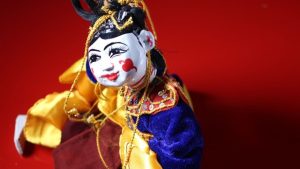
India has a long and rich history of handicrafts, which showcases the diversity of the nation’s cultures. Indian weavers, embroiderers, and dyers have been mastering their crafts for generations, producing exquisite fabrics such as **Banarasi silk sarees** and exquisite **Pashmina throws**. **Rajasthani pottery**, **Madhubani paintings**, and **Kashmir wood carving** are just a few examples of the regional craft forms that continue to thrive today. These handicrafts not only serve as artistic expressions but also provide livelihoods to millions of artisans across the country.
20. The Variable Climate of India
India’s enormous size and geographical variety cause its climate to vary greatly. The **Himalayas** provide bitter cold and the **Thar Desert** blistering heat, and the lush tropical climate of Kerala contrasts sharply with the dry, desert parts of Rajasthan. A distinguishing feature of Indian life, the **monsoon season** brings torrential rains that are both necessary for agriculture and difficult for infrastructure every year to the subcontinent. Everything in the nation is impacted by this climate variety, including the festivals, food, and wildlife.
21. The Ayurvedic Miracle

Over 3,000 years ago, India developed the ancient medical system known as **Ayurveda**. In contrast to contemporary treatment, Ayurveda prioritizes a comprehensive strategy that stresses harmony between the body, mind, and spirit. It uses natural remedies like herbs, oils, and dietary practices to treat illnesses and promote wellness. Today, Ayurveda has gained international recognition, and millions of people around the world follow its principles for better health and well-being. **Panchakarma**, an Ayurvedic cleansing and detoxification process, is one of the most popular therapies sought by wellness enthusiasts.
22. Technology Industry Boom in India
In the software and IT sectors, India is becoming a world leader. Hundreds of tech businesses and startups are based in cities like **Bangalore**, which is commonly referred to as the **Silicon Valley of India**. Considering the emergence of industry titans like **Infosys**, **Wipro**, and **Tata Consultancy Services**, India’s progress in the IT sector is astounding. India is a preferred outsourcing destination for large organizations globally since it produces some of the greatest engineers and developers in the world.
23. The Diaspora of Indians
With more than **18 million Indians** residing overseas, India has one of the biggest and most pervasive diasporas in the world. Indians have made major contributions to the world economy from the United States to the United Kingdom, Australia to Africa, particularly in
domains include education, technology, and medicine. Prominent individuals such as **Sundar Pichai**, the CEO of Google, and **Indra Nooyi**, the former CEO of PepsiCo, serve as prime examples of the success of the Indian diaspora in positions of leadership worldwide. Furthermore, Indian culture has proliferated via festivals, movies, and cuisine, leaving an impact on people all over the world.
24. The Special Wedding Customs of India

Indian weddings are renowned for their vivid hues, intricate customs, and exuberant festivities. Numerous rituals that vary according to location, religion, and community are part of a traditional Indian wedding, which might go on for several days. The ceremonies are full of music, dancing, and family get-togethers. From the **Mehendi ceremony**, where the bride’s hands are covered with henna patterns, to the groom’s entry on a horse in a **Baraat**. Indian weddings are a spectacular display of love and culture, frequently with enormous guest lists, delectable feasts, and exquisite costumes.
25. The Oldest City in the World
One of the world’s oldest continuously inhabited cities, **Varanasi**, is located in India. Located on the **Ganges River**, Varanasi has played a key role in Hindus have used it as a cultural and religious hub for more than **3,000 years**. In Hinduism, the city is regarded as one of the holiest, drawing pilgrims who come to bathe in the Ganges’ sacred waters in order to atone for their sins. Ancient ghats (riverfront stairs) and the captivating **Aarti** (prayer) rites in the evenings make Varanasi an unparalleled spiritual experience.
26. The Biggest Sundial in the World
The biggest sundial in the world is in **Jaipur**, India, and holds the record. Several equipment for studying celestial bodies may be found at the **Jantar Mantar**, an astronomical observatory constructed by Maharaja Jai Singh II in the early 1700s. Among these is the **Samrat Yantra**, the biggest sundial in the world, which has amazing precision in telling the time. Reaching a height of **27 meters** (about 88 ft), it continues to be regarded as one of the greatest scientific feats of ancient India.
27. India’s Impact on International Mathematics
India has significantly advanced maths. First documented in India, the **concept of zero** transformed mathematics and cleared the path for contemporary arithmetic. The Indian mathematician **Aryabhata**, who lived in the fifth century, made important advances in algebra, trigonometry, and astronomy. The **decimal system**, another pivotal innovation, also originated in India and is still used worldwide today. These early mathematical breakthroughs underscore India’s rich legacy in scientific thought and innovation.
28. The Variety of Dance Forms in India

Indian dance is an essential component of the country’s culture, with each area having its own distinct style. One of the earliest classical dance styles is **Bharatanatyam** from Tamil Nadu, which is renowned for its elaborate footwork and expressive hand gestures. **Kathak**, a popular storytelling art form in Northern India, uses quick spins and rhythmic foot motions to convey stories. Other famous classical forms combining dance, music, and theater are **Kathakali** from Kerala and **Odissi** from the state of Odisha. In addition to its classical dances, India has a wide range of folk dances that are performed during festivals and festivities, such as **Bhangra**, **Garba**, and **Lavani**.
29. The Significance of the Indian Flag
The **Tiranga**, or Indian national flag, has three horizontal stripes: saffron, white, and
green. Green denotes development and wealth, white stands for peace and truth, and saffron for bravery and sacrifice. The **Ashoka Chakra**, a navy-blue 24-spoke wheel that represents justice and advancement, is located in the middle of the white stripe. The national ideals and values are reflected in the flag, which has great significance.
30. India’s Growing Economy
India has emerged as one of the fastest-growing economies in the world, playing a significant role in global markets. The country is a hub for sectors like information technology, pharmaceuticals, and textiles. It is also a major player in agriculture, producing large quantities of rice, wheat, and cotton. With ongoing infrastructural development and an ever-growing middle class, India’s economic influence continues to expand, and experts predict that it will be one of the leading global economies in the coming decades.
Conclusion
India is a nation of opposites, where modernization and tradition coexist together. India is a place of miracles, from its long history and rich cultural legacy to its thriving IT sector and achievements in space research. India never ceases to amaze, whether you’re drawn to its spiritual traditions, intrigued by its scientific discoveries, or excited to experience its colorful festivals and cuisine.
The rich and varied terrain of India is barely touched upon by these fascinating facts; every region of this enormous country has a tale to tell. The tenacity, friendliness, and spirit of India’s people—who have preserved the heritage of one of the oldest civilizations in history—are what make the country so beautiful, not simply its sights and accomplishments.

